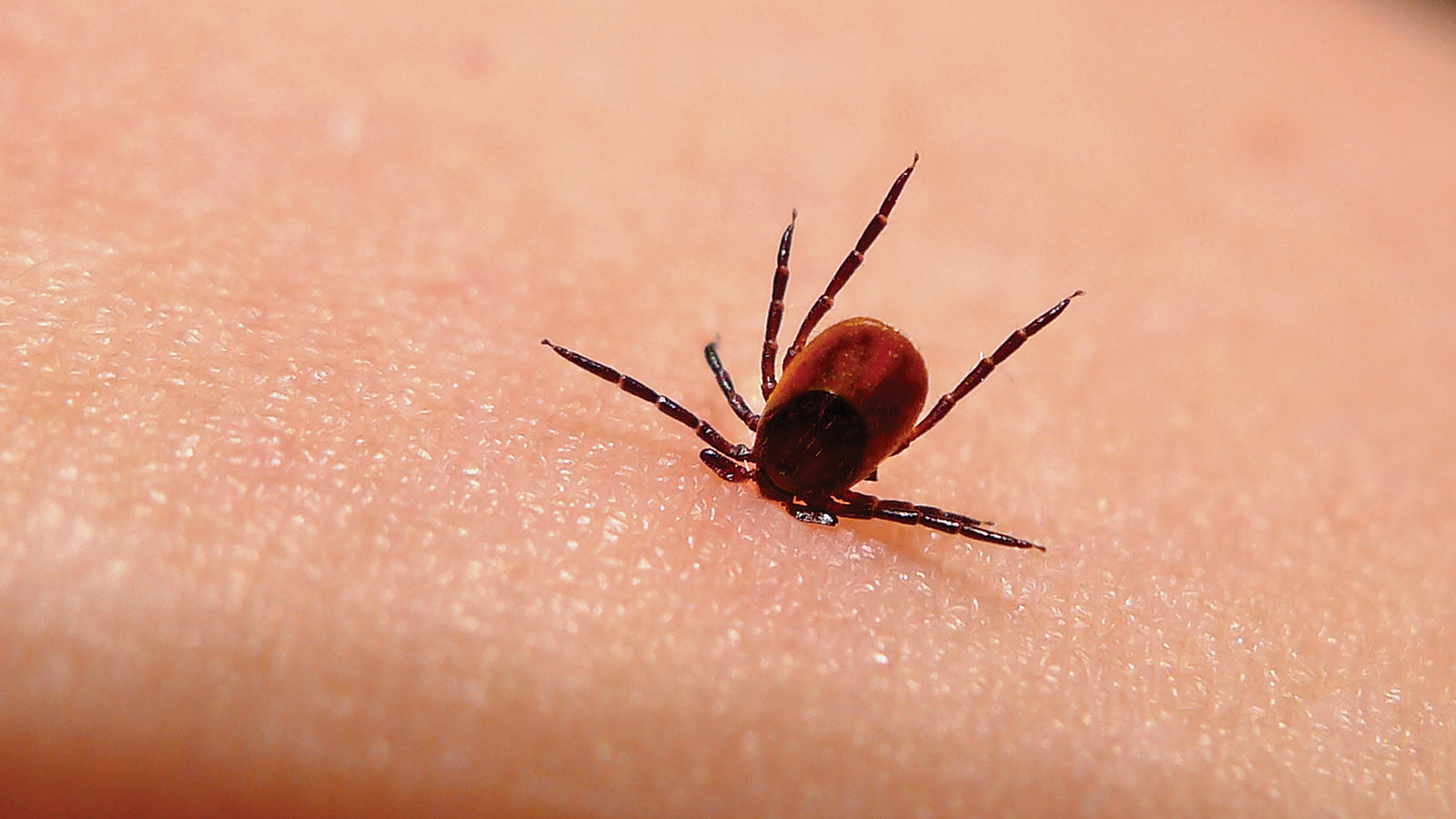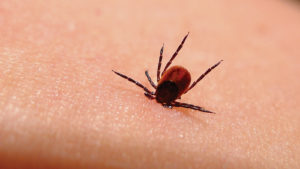Tick numbers on the rise after mild winter, early spring
The number of tiny blood-sucking parasites that can carry a variety of illnesses — including Lyme disease — have been on the rise in the area over the past several years.
But a mild winter combined with an early spring may be the perfect combination for the local tick population to really take off in 2016, according to local naturalist Jon Beam.
“Studies suggest we need six consecutive weeks of frigid conditions to really knock back the tick population, and we just didn’t have that this winter,” he said. “I’ve personally come across a half-dozen of them already this year on me or the dogs. We were picking them up in March, which is unusual.”
Dr. Elam Stoltzfus, of Lewisburg Pediatrics, has noticed the trend, as well.
“I’ve already seen several kids come in with ticks on them — and a few cases of Lyme disease — so far this spring,” he said. “In fact, I’ve had to remove four ticks from myself already this year.”
Kim Van Horn, of Watsontown, who was diagnosed with Lyme disease four years ago, said that while she hasn’t seen any ticks yet on the family’s organic grain farming operation, her daughter, who lives nearby, has.
“She started finding ticks on her cats and dogs in March,” Van Horn admitted. “They are really prevalent in the area, and showing up much earlier than normal.”
Beam said the area has already seen a gradual increase in ticks over the 25 years since he started working at the Montour Preserve, near Washingtonville.
“They’ve really grown. During my first five or six years at the preserve, no one ever got ticks — not even the guys working there or myself,” he said. “Then, we’d start to find an occasional tick on us. And then, tick sightings became a lot more frequent.”
He feels a variety of factors have affected the increase.
“Part of it is that we have shorter, warmer winters overall. That is a major part of it,” he said. “Ticks also don’t have major natural predators. It allows the population to keep growing and pushing out into new areas.”
Lyme concerns
“Lyme Disease is a bacterial infection,” said Dr. Lisa Esolen, system medical director of infection prevention and control for Geisinger Health System. “The bacteria is transmitted from the bite of a deer tick — not other ticks.”
Not all deer ticks carry the Lyme Disease bacteria, and according to Dr. Stoltzfus, it can take quite a while for an infected tick to transmit the disease.
“It takes at least 48 to 72 hours after the tick first comes in contact with the skin. The tick ingests blood from the person, and it inadvertently regurgitates some of the bacteria into the blood stream,” he said. “If we get a kid who’s been exposed to a tick for 12 to 24 hours, there is practically no risk that they have Lyme Disease. A lot of people panic when they see a tick on their skin, but there usually isn’t a reason to panic.”
Lyme Disease has been known to cause a variety of symptoms in people depending on how long they have been infected.
“After first being exposed, you may feel a fever, fatigue and achiness like you are coming down with something. A bullseye-like skin rash may develop in about 70 percent of cases,” said Dr. Esolen. “Lyme Disease can also affect the joints and nervous system. Joints can become swollen, painful and red. In some cases, it can also cause bells palsy, where part of your face can become paralyzed.”
However, there is no need to fear the outdoors, according to Dr. Esolen.
“With proper precautions there is very little to worry about in regards to Lyme disease,” she said. “There are more health benefits of kids playing outdoors than there are concerns of Lyme disease. It preventable, completely treatable and curable if someone does get it. That’s what people need to remember.”
Be vigilant
The key to preventing Lyme disease is to avoid being bitten by a tick, which means being proactive.
“If you are out and about, especially in high grass or brushy areas, always do a full-body check afterward,” said Beam. “Wear light-colored clothing, which makes ticks easier to see. Tuck your trousers into the top of your socks to help prevent them from getting on your skin.”
Dr. Stoltzfus agrees with a proactive approach.
“I strongly recommend people use insect repellent before going into the woods. There are some good repellents out there as long as you use them appropriately. Also, cover your skin and make yourself less accessible to the ticks,” he said. “This year, especially, people need to be alert to the tick situation. They need to check their children over, especially if they were in brushy or wooded areas.”


